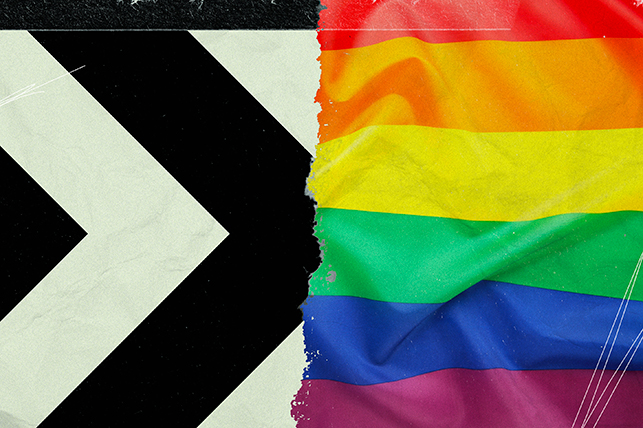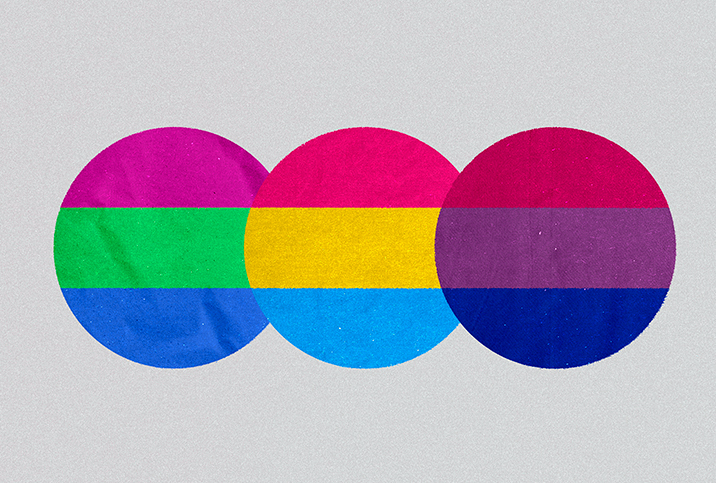How to Define 'Heteroflexibility'

Human sexual orientation is a multifaceted topic. As of now, an array of orientations are covered under the expanded acronym of LGBTQIA+.
One lesser-known orientation is heteroflexibility. And while you may not have encountered someone identifying with the term, it has caused buzz on social media.
Webster, help me out!
Unlike orientations such as lesbian or gay, heteroflexible has a less clear definition. Patrick Walsh, L.C.S.W., a Title IX outreach coordinator in New York City, described it as people who are largely heterosexual in their romantic and sexual preferences.
"They occasionally 'flex' to varying degrees to reach for partners of the same sex, but not so often that it cross-fades into what we typically think of when we think of bisexuality," he said.
Roberta Chevrette, Ph.D., an assistant professor at Middle Tennessee State University and the co-author of "Dangerous Dames: Representing Female Empowerment in Postfeminist Media," theorized heteroflexibility could reflect:
- Individual, sexual or gender identities
- Relationship norms that signify heterosexuality
- Sexual or gender practices
She further pointed out the gravity of its word structure, which centers on heterosexuality.
"Heteroflexibility signifies the straightness element that comes first, then the openness to same-sex experiences or activities," Chevrette said.
She also noted the positive effect of disrupting the assumption that language and sexuality are fixed and have a temporal duration, saying it promotes open-mindedness.
Chevrette said the term heteroflexible has been used since the 1990s. James Miller, host of the "Lifeology" radio show and a licensed psychotherapist in Florida, said the term started picking up speed following a study around 2008 to 2009. Researchers found many participants didn't fit into the typical heterosexual, bisexual and homosexual categories—"transgender" was not a factor yet—but instead were a caveat in the middle. A follow-up study years later revealed the perseverance of these qualifiers.
The heteroflexible term started to become more recognized. This assertion of heteroflexibility's role in filling in the gaps on the sexuality spectrum was something the other experts agreed on as well.
"Heteroflexible is a word that constitutes a kind of further evolution in our nuanced understanding of human sexual expressions," Walsh said. "People can be situated on that spectrum at various points over the course of their lives."
As someone identifying as queer, Chevrette alluded to the idea of "flexing" heterosexuality as being what "queering" is: defying straight and gender preconceptions. Such terminology challenges the idea of a strictly binary society, which Walsh, Miller and Chevrette all claimed is pivotal for LGBTQIA+ rights and acceptance.
As it relates to bisexuality
Bisexuals regularly have their own battles against bi erasure, invisibility and phobia, even within the LGBTQIA+ community.
"Some gay and lesbian activism traditionally relied on this idea of 'We're just like you, but we're gay,' meaning 'We're just like straight people, but we're gay,' and bisexuality has the potential to disrupt those kinds of binaries," Chevrette said. "That's because bisexual people aren't always necessarily attracted equally to people of different genders."
There has been substantial back and forth regarding heteroflexibility's connection to bisexuality.
"Sometimes it can be quantified as bi-curious, though many people who consider themselves heteroflexible wouldn't want to be considered that," Miller said. "Perhaps they don't identify with what the stereotypical person of that community represents, and that can be either a very pejorative or affirming way of how people see that."
Psychologically speaking, people tend to be uncomfortable with gray areas, such as bisexuality, which leads to ostracization stemming from a lack of understanding.
According to Walsh and Miller, this prejudicial pushback could be combated by investigating and explicating the need for a particular label.
"We recapitulate some of what I would argue are the pitfalls of a culture that demands that we redefine and fix identity, as opposed to allowing it to vary over the course of our lives in different and interesting ways," Walsh explained.
Miller emphasized the significance of perception, saying people often have the idea that heteroflexible people tend to lean toward sexual components, while bisexual people desire both an emotional and physical connection. He reported this phenomenon is especially prevalent among men, as some men's hypersexuality or higher sex drive don't always necessitate a deeper relationship.
However, the experts mentioned there is no be-all and end-all to sexuality. Being heteroflexible, you can fall anywhere on the spectrum, with any combination of the facets of sexual identity.
Prevalence and implications
In terms of sexual orientations, heteroflexibility isn't as frequently reported as others. But a "census count" isn't available, in part due to the fact that some people don't even consider it a legitimate orientation and others have simply never heard of it.
However, Chevrette said people using it in their own parlance can bring it into reality, which is something Miller inferred can lead to more cohesive public and private lives where you are free to express your own brand of sexuality.
Both Miller and Walsh pointed to prison as a confounding variable because of inmates' separation from the opposite sex. In other words, people will go with what's available, being "gay for the stay." This makes heteroflexibility commonplace in incarcerated settings, to the point where it's constantly referenced in media and almost expected of long-term prisoners. While any same-sex visual representation within story arcs in media is a plus, it concurrently undermines true identities and contributes to bi erasure because of its implied contingency.
Gender is another variable in heteroflexible prevalence. The general consensus among experts is that it presents more commonly among women.
"There's a sort of commodification of girl-on-girl action for men's pleasure, but that doesn't necessarily make them any less desirable from a societal kind of male gaze perspective," Chevrette said. "For a long time, there's been a larger kind of stigma against same-sex activities for men than women."
She suggested this trend has led to the patriarchal eroticization of lesbians and bisexuals.
It is important to remember Western culture is not the only one to consider. As an example, Miller pointed to the lack of heteroflexible distinction in Latin and Muslim cultures.
"It's just a very common perception and knowledge [in these cultures] that if you don't receive and aren't penetrated, then you aren't gay at all," he explained. "This is different in the [United States] because we have classifications, qualifiers and nomenclatures, if you will, for so many different aspects."
Across the world and various belief systems, sexuality has a unique meaning.
Rather than policing our personal lives, Walsh suggested promoting the freedom to flourish as individuals and to explore who we are, even though this freedom can be daunting in the face of normative claims of right and wrong.
Chevrette and Miller strongly encourage this idea, negating the need for labeling or locking ourselves into one category indefinitely in order to truly embrace and accept ourselves.
"A term like [heteroflexibility], though it is an imperfect bookmark, describes a location in a much longer story of human development and deepening consciousness," Walsh said. "It's an imperfect way of making people freer."


















